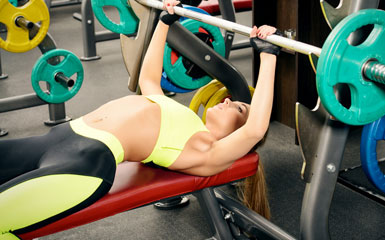Exercise is a crucial element of a healthy lifestyle, offering both immediate and long-term benefits. Routine exercise improves strength and cardiovascular endurance, helps weight loss, and decreases health risks. Exercise can broadly be split into three categories: low-intensity, moderate-intensity, and high intensity. It is generally believed that moderate intensity exercise (recommended for at least 30 minutes a day for five days a week) is a proper workout. But now, a new study published in the American Journal of Physiology-Regulatory, Integrative and Comparative Physiology suggests that performing high-intensity interval or sprinting exercise for a few minutes may as beneficial as exercising at a moderate-intensity level for longer periods (www.news-medical.net).
 Previous studies found that exercise generates new more energy-producing mitochondria in the cells and improves the function of existing ones. This altered function can be beneficial to cells and decrease the risk of chronic disease but it was not clear whether the intensity of exercise had any impact on this mitochondrial response.
Previous studies found that exercise generates new more energy-producing mitochondria in the cells and improves the function of existing ones. This altered function can be beneficial to cells and decrease the risk of chronic disease but it was not clear whether the intensity of exercise had any impact on this mitochondrial response.
To study this, the researchers assessed eight young adults who performed cycling workouts at different levels of intensity, where moderate intensity was defined as 30 minutes of ongoing exercise at 50% peak effort and high-intensity as five 4-minute sessions at 75% peak effort. The subjects were allowed a one-minute rest period between each session and sprint cycling as four 30-second sessions at maximum effort with 4.5 minutes rest in-between.
Before and after each session, the researchers determined the amount of energy the participants used up during each session and compared mitochondrial changes in their thigh muscles. They found that fewer minutes of high-intensity exercise triggered similar mitochondrial responses as exercise performed at moderate-intensity for longer periods. The study found that:
- Participants had levels of reactive oxygen species (ROS) that could potentially promote cellular processes that improve metabolic function
- Fewer minutes of high-intensity exercise prompted similar mitochondrial responses as exercise performed at moderate-intensity for longer period
The findings suggest that “exercise may be prescribed according to individual preferences while still generating similar signals known to confer beneficial metabolic adaptions”.
High-intensity interval training (HIIT) is one of the most time-efficient ways to exercise and comes with several benefits:
- Burns fat: High intensity workouts can increase the amount of calories you burn during your exercise routine and it will continue burning calories after you’ve finished your workout. This is known as “after-burn effect”.
- Speeds up metabolism: The American College of Sports and Medicine says that HIIT helps you consume more oxygen than a non-interval workout routine, which increases your rate of metabolism from about 90 minutes to 144 minutes after a session of interval training. By speeding up or changing the metabolic rate, HIIT can potentially improve athletic endurance and fat-burning possibility, which means the body would be able to efficiently burn more calories even while watching TV.
- No equipment needed: These workouts are extremely cost efficient because you need no special equipment and it can be done anywhere, anytime. All you need is a little open space.
- Less time required: In this fast-paced world, many people would find it difficult to set aside time for exercise. HIIT workouts are an effective option for busy individuals as they involve only less time than longer moderate intensity exercises.
- Improves cardiovascular health: Several studies have found that bouts of high-intensity exercise improves heart and lung health in less time than the conventional recommended 30 minutes a day of moderate-intensity exercise, 5 days a week. HIIT workouts improve several risk factors for heart disease, such as blood pressure, waist circumference, body fat, heart rate and blood pressure.
HIIT may be great for healthy, young people, but older adults should get their physician’s clearance before starting off.
